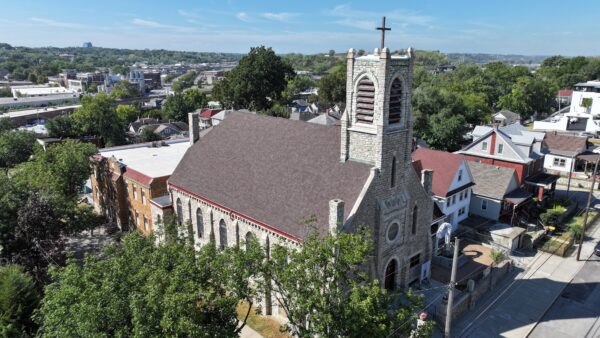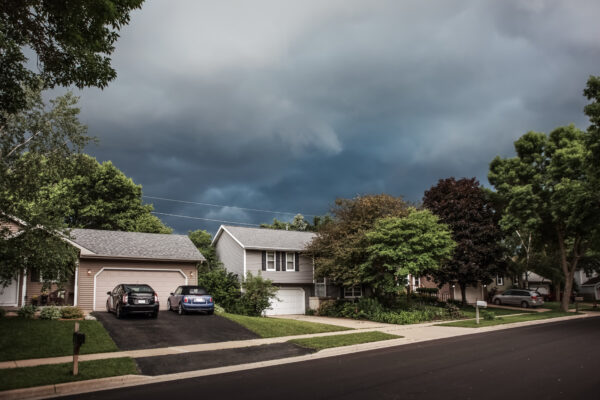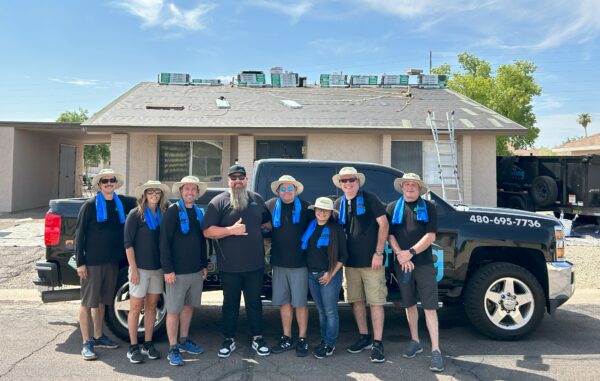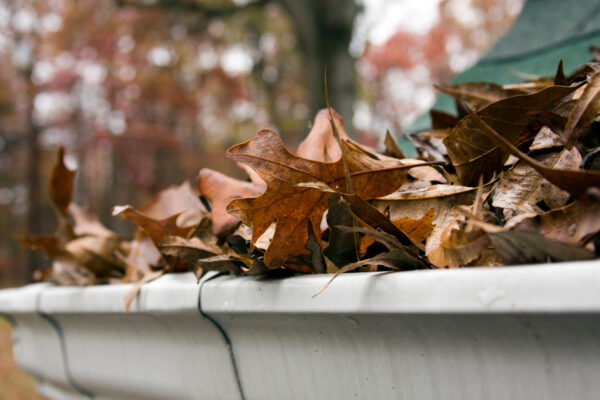
Fall Roof Maintenance Avoids Any Winter Worries
When the weather cools and leaves turn in North America, many homeowners are busy preparing their homes for winter. The roof should be no exception.The autumn season typically presents the last few days of the year where it is safer and more comfortable for a Malarkey Certified Roofing Contractor or homeowner to be up on the roof, inspecting its condition. Before checking your own roof, be sure to follow these important roof safety tips. So, when you begin raking those leaves, it is a great time to have a look at your roof as well.
A Clean Slate with Clear Gutters
When leaves fall in your yard, there’s a good chance that they’ll accumulate on your roof as well. If your home has rain gutters, then you’ll know you must keep them clear before rain and snow arrive in earnest. Clogged gutters can prohibit proper water drainage from the roof and present several issues for the property overall. On the roof, clogged gutters can increase to the potential for leaks if water pools and rots the plywood decking. When temperatures drop further, winter ice dams can develop.
What is an Ice Dam on a Roof?
An ice dam is a ridge of ice that forms at the edge of a roof and prevents melting snow (water) from draining off the roof,” according to researchers at the University of Minnesota. “The water that backs up behind the dam can leak into a home and cause damage to walls, ceilings, insulation and other areas.
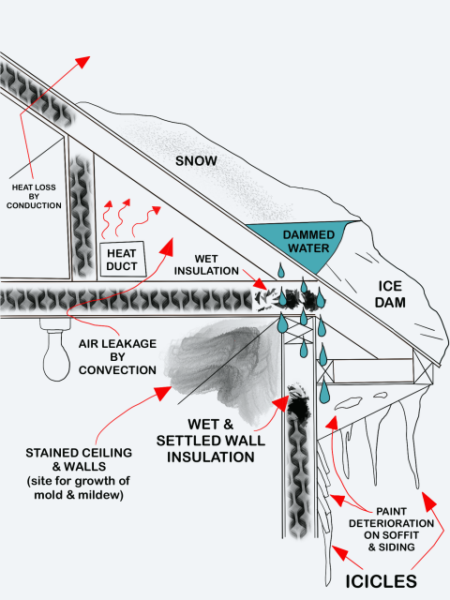
Ice dams also invite additional winter weight on the roof. The added weight can stress the structure of the roof itself. “Most residential roofs,” says the IBHS, “regardless of the location of the house should be able to support 20 pounds per square foot of snow before they become stressed.” To assess the weight of snow and ice on your roof, use the chart below for a quick reference:
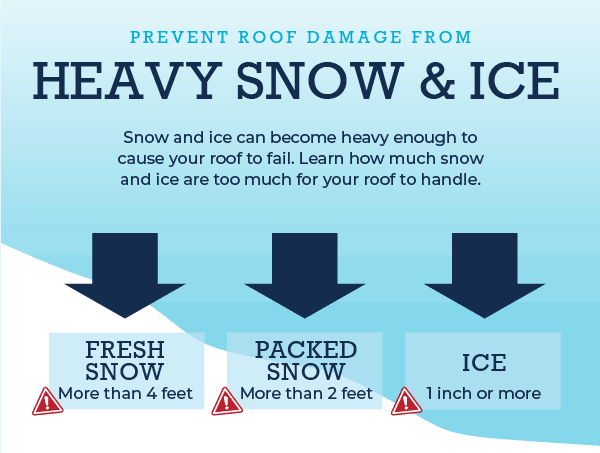
Ice dams are caused by variation in the temperature of the roof surface, which lead to differences in how snow and ice melt or form on the roof. Typically, a roof’s peak would be warmer and shed snow, whereas the edge of a roof especially eaves, are much colder. Management of a roof’s temperature during colder months can prevent ice dams from forming by controlling heat loss from the home.
Install Adequate Insulation and Ventilation
Ice dams on your roof can also be avoided with proper insulation and ventilation inside the home. By keeping heat out of your attic and inside of your home, the risk of ice dam formation can be reduced. Appropriate amounts of insulation and ventilation for the structure may additionally help homeowners save on heating costs with a more energy efficient home. Roof penetrations such as vents, that feed into the attic, should be sealed and insulates tightly so that excess airflow is minimal. It is even helpful to insulate light fixtures in the ceiling below an unheated attic space. For more tips and expert advice on the roof and attic insulation and ventilation needs of your home, be sure to speak with a roofing contractor and an energy efficiency specialist.
A Fresh Start for Fire Resistance
Sweeping the roof clear of sticks and leaves in the fall also presents an opportunity to look at the condition of you roof and shingles in greater detail. Keep an eye out for any significant granule loss, cracks, blisters, or moss growth which may lead to other issues in the future. (Find more tips on inspecting the state of your roof in this post). Additionally, for homeowners with active fireplaces and chimneys, sweeping the roof clear of flammable tree debris is also a good preventative practice. All Malarkey shingles include a Class A fire rating, which is the most fire-resistant rating available.
Making time to inspect your roof in the fall can provide peace of mind in the winter. With a few simple steps to clear gutters, sweep off tree debris, and inspect the state of your shingles, identification of any existing problems can be found before wintry weather arrives. Be sure to take the necessary safety precautions if you plan to look at you own roof. Better yet, leave the work to the professionals, and connect with a Malarkey Certified Roofing Contractor for quick roof inspection.
